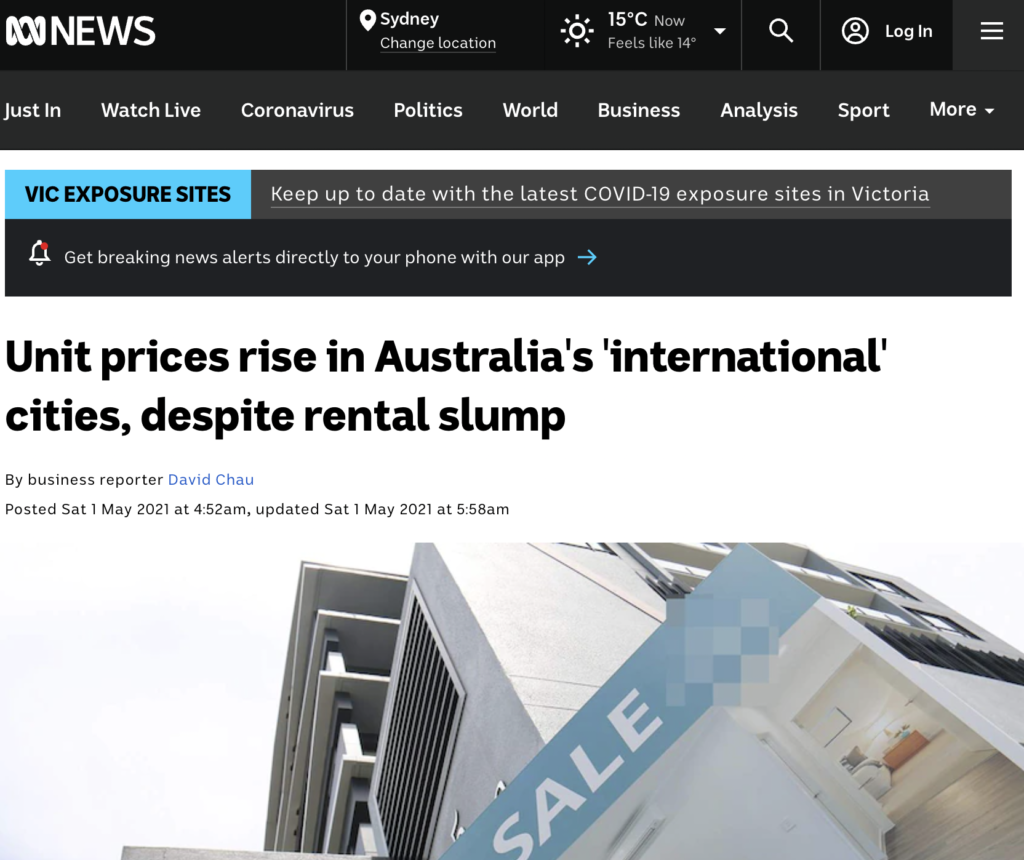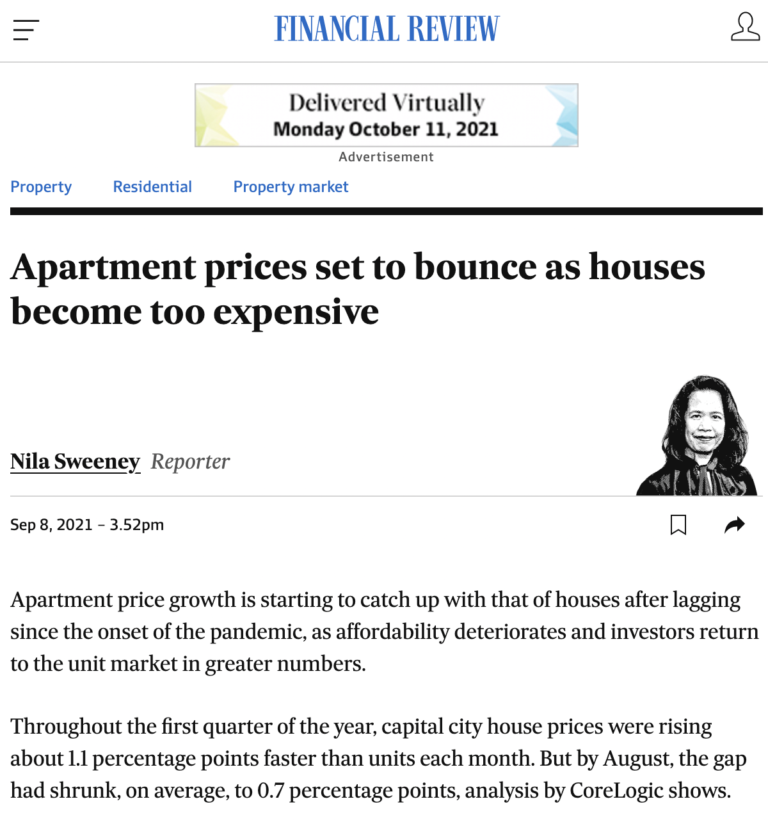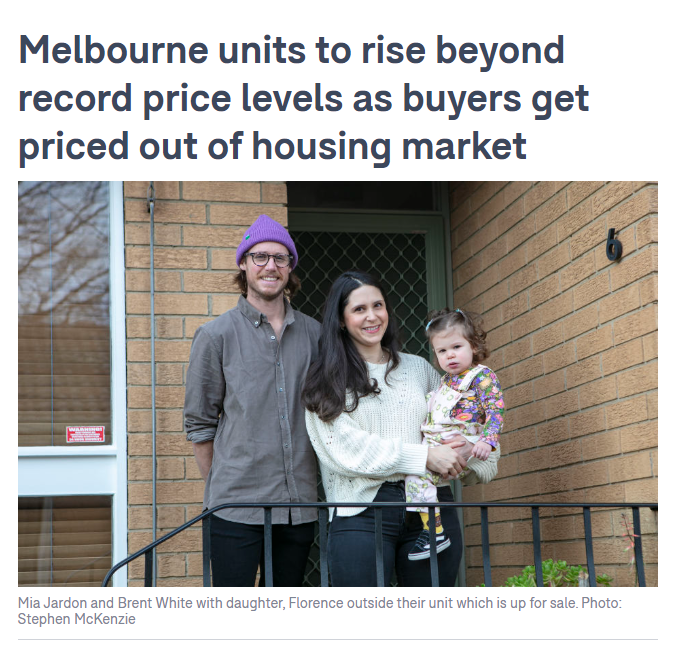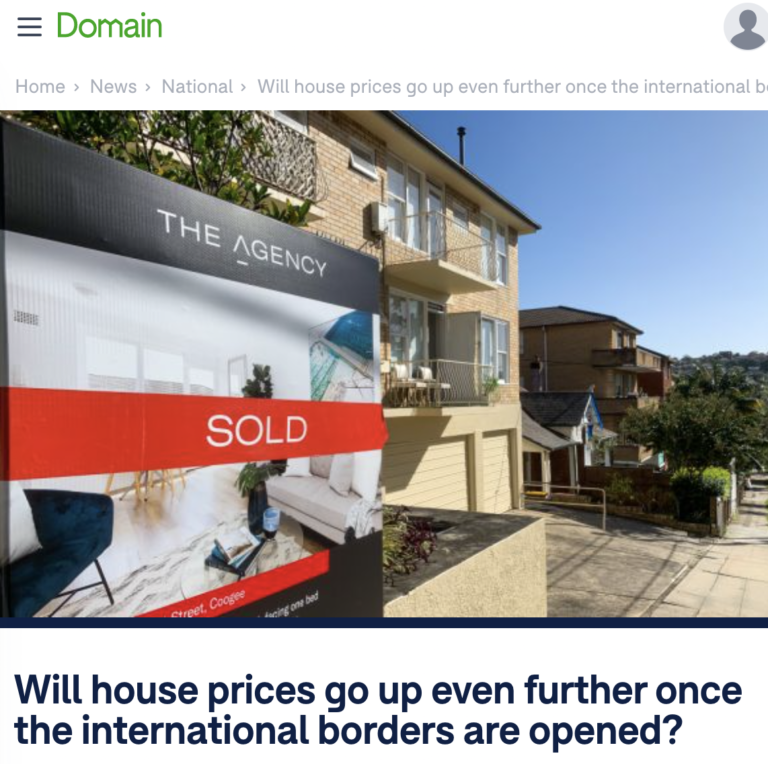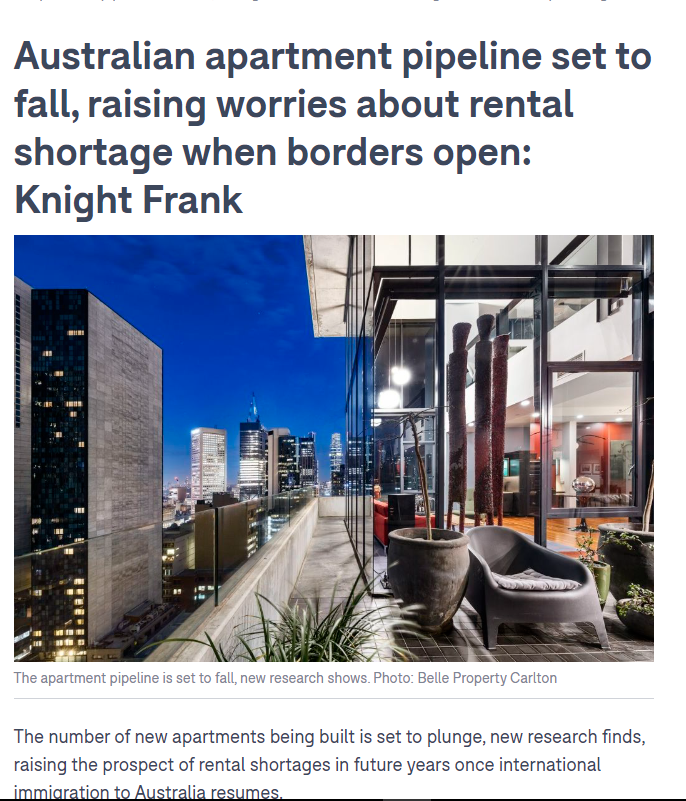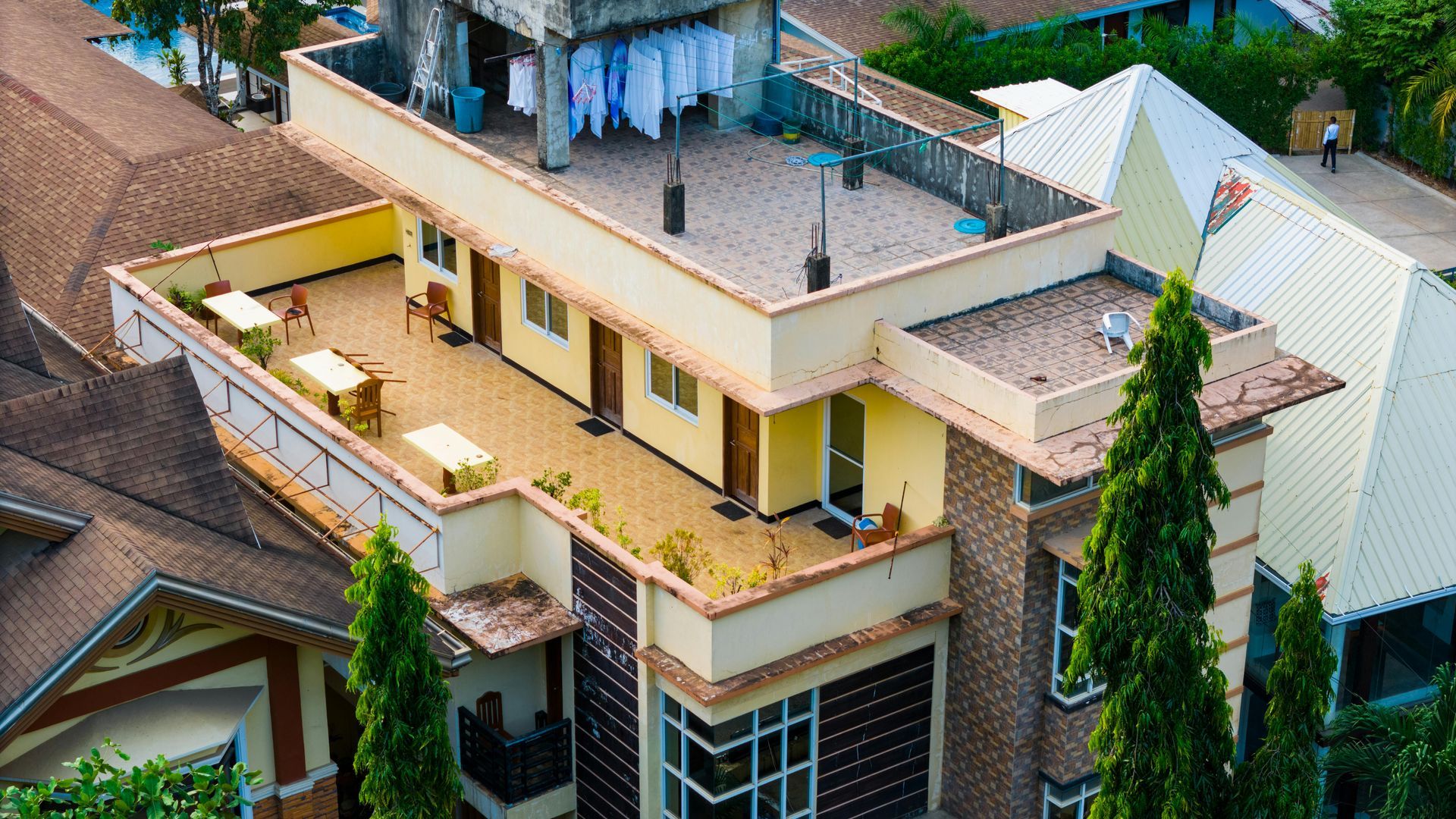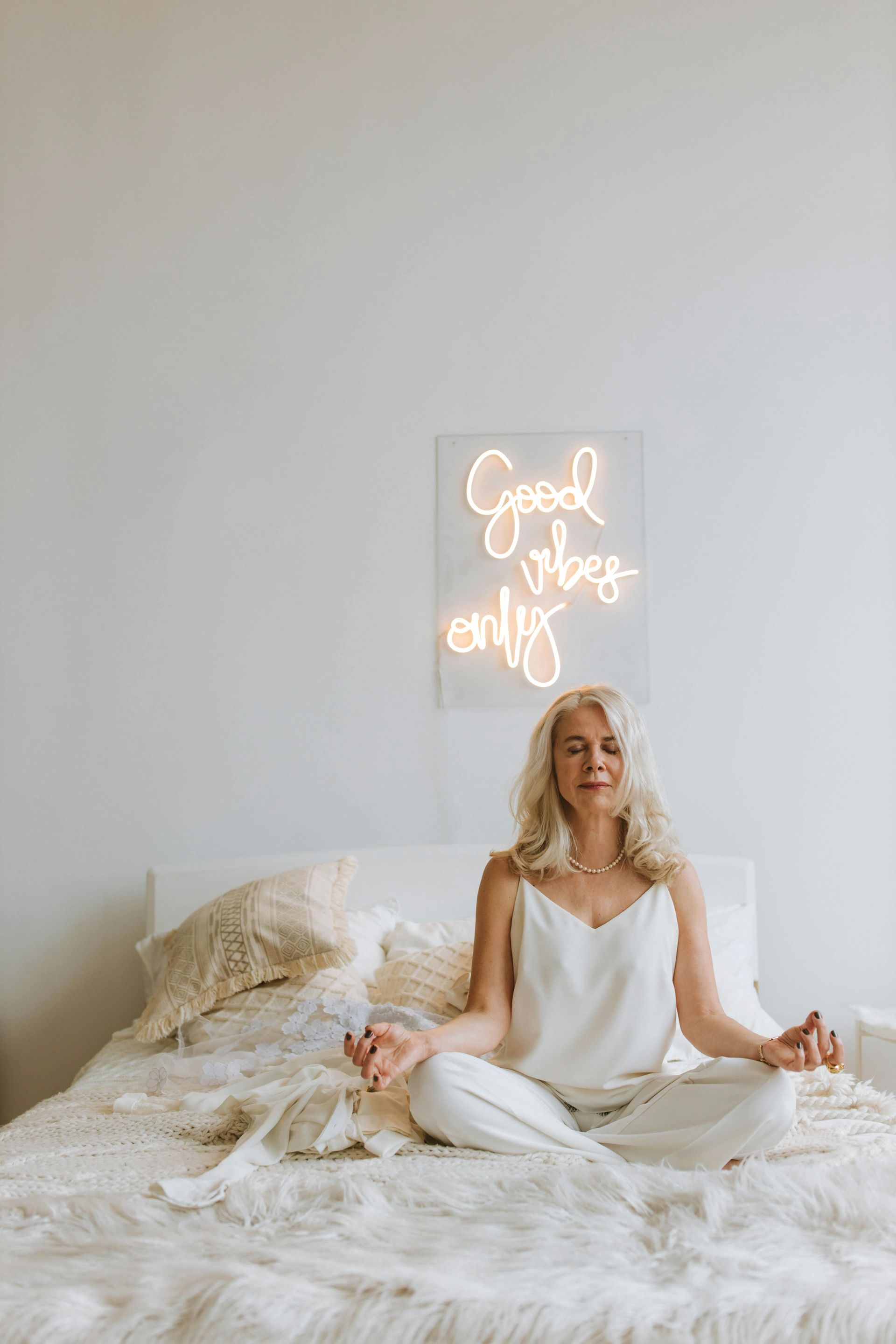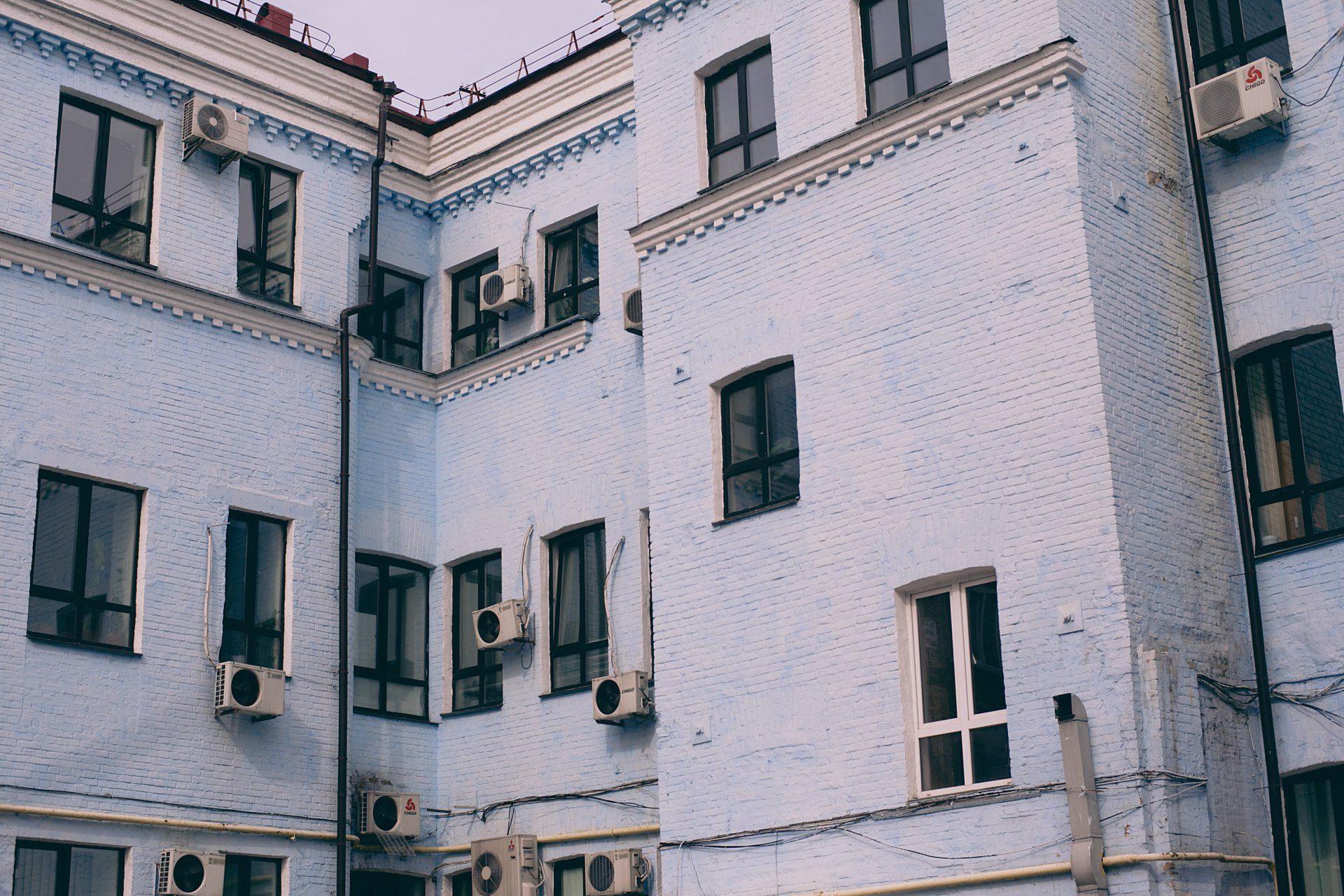
While most people are still fighting for houses the apartment market is getting heated
A very common trend in the big cities is that once people get priced out in the house market they decide to jump on the apartments.
When once they were willing to relocate up to 30km away from where they live in order to fulfill their backyard dream they quickly realize that Location, Lifestyle and Time are more important than a small backyard that they will not enjoy much once they will use all their spare time commuting.
Another very important point is education, they want to make sure their kids will be able to go to specific schools that they will not have access to if they choose to live that further way.
On top of that you have the investors that are returning strongly to the market and really taking advantage of the Unit market.
Investors think with their pockets and not with their hearts and they know that once the borders reopen the CBDs will be buzzing again making them jump on the opportunities currently available in this space.
I thought I’d just make a post with all the current news happening in Australia for those that are still on the fence thinking it’s either too late or too soon to do something.
Click on the images to go to the original news.
"Importantly, research suggests most international arrivals to Australia are initially renters, so the demand shock amid COVID was disproportionately concentrated in the rental market."
Sydney's median house price has climbed to $1.1 million (compared with $755,360 for units), according to CoreLogic's data.
The price difference is roughly $357,000, and is far wider compared to every other capital.
"So it is a good time to be considering buying a unit because post-COVID I believe that gap will narrow.
"More people will return to Sydney and if they need somewhere to live close to the CBD, they will buy a unit if they cannot afford a house."
“The performance gap between houses and units is diminishing, mostly because houses are becoming substantially less affordable than higher density options,” said CoreLogic research director Tim Lawless.
“Sydney households were spending 11.3 times their gross annual household income to buy a house, compared with 7.7 times for units.”
Mr Lawless said the growing investor activity would help narrow the gap further.
“Investors are the fastest-growing segment of the market at the moment, and demand from investors is often skewed towards the unit sector,” he said.
Melbourne’s median house price soared past $1 million in the June quarter, defying the pandemic to set a record and raising fresh fears over housing affordability.
Units also hit a record price, rising to a median of $572,793.
While the cost of a unit sits at nearly half that of a house, experts say affordability issues will force many in the market, particularly first-home buyers, to purchase apartments rather than houses, which will then drive unit prices higher again.
Domain chief of research and economics Nicola Powell said the higher house prices climbed, the more demand would flow into units.
Another very important factor to take into consideration is the short supply of properties.
The Australian pipeline is really drying out and it has been flagged by many papers.
All this combined to the exaction of what will happen when the borders re-open It will tighten the market even more and make rents sore.
The reopening of international borders could put further upward pressure on house prices and should be done gradually to avoid overheating the property market even further, experts warn.
Figures out last week show Australian house prices grew by 2.1 per cent in February, the biggest month-on-month gain in 17 years.
The CoreLogic data revealed Sydney’s median house price had increased by 4.8 per cent over the past three months, while Melbourne’s median house price had risen by 4.2 per cent.
Australian property prices are already running hot, but the return of foreign investment could pour fuel on the fire.
New analysis from Asian real estate platform Juwai IQI shows that while some capital cities have experienced double-digit price growth on the back of record stimulus, their experience has been ‘mild’ in comparison to overseas.
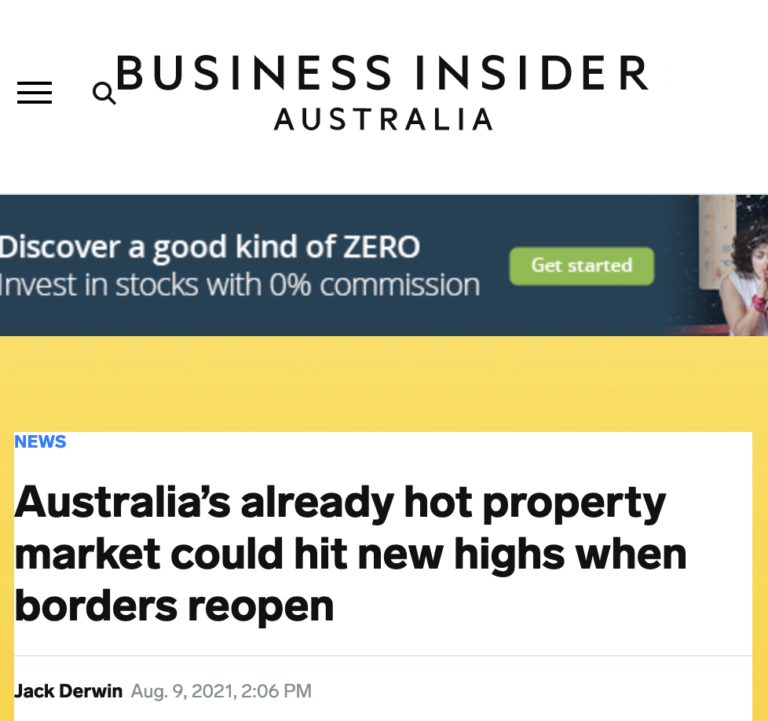
Without foreign arrivals or investors, many developers of traditional for-sale apartments are turning to BTR as they can start construction of these quicker, without retail sales processes, but the volume was not nearly enough to offset the slowdown in build-to-sell units, he said.
Without policy changes to encourage development of new rental stock, Australia faces a rental supply crunch when the country’s borders reopen, Mr Warner said.
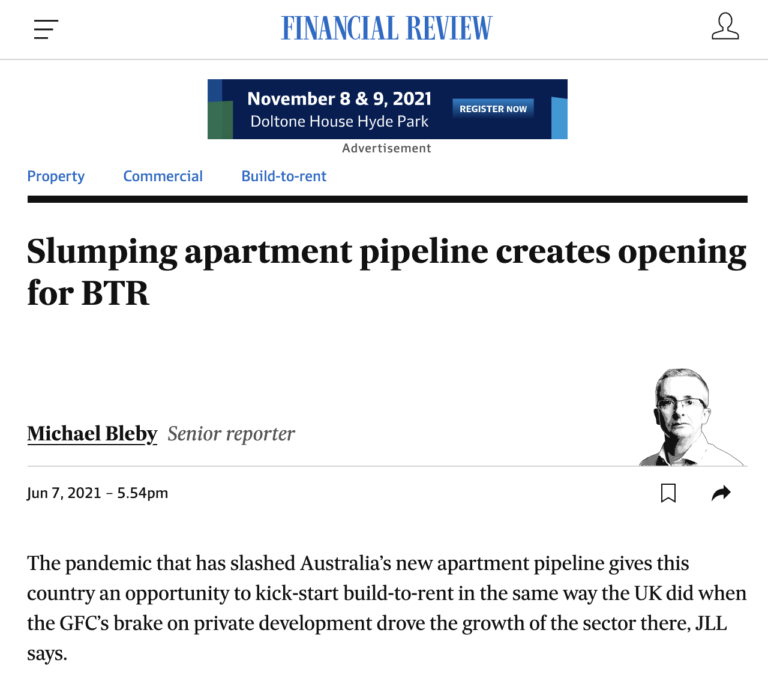
“If we were to allow a return to normal immigration levels then you’re suddenly doubling demographic demand again at a time when the property market is still hot from low interest rates, then that could cause a real problem in terms of adding pressure on prices and worsening affordability.”
The shrinking apartment pipeline is evident in the larger capital cities.
In Sydney, only 36,275 new units will be on the way by 2024, down from 67,925 from 2018-2020, the research found.
Projects could face higher building costs in the NSW capital and competition from state and federal government infrastructure projects for supplies and labour.
For Melbourne, new unit stock will fall to 34,250, down from 42,250, over the same time period.
New buildings there would need wellbeing elements such as gardens and dry and wet exercise areas after residents’ long periods confined to their homes, Ms Ciesielski said.
share to

